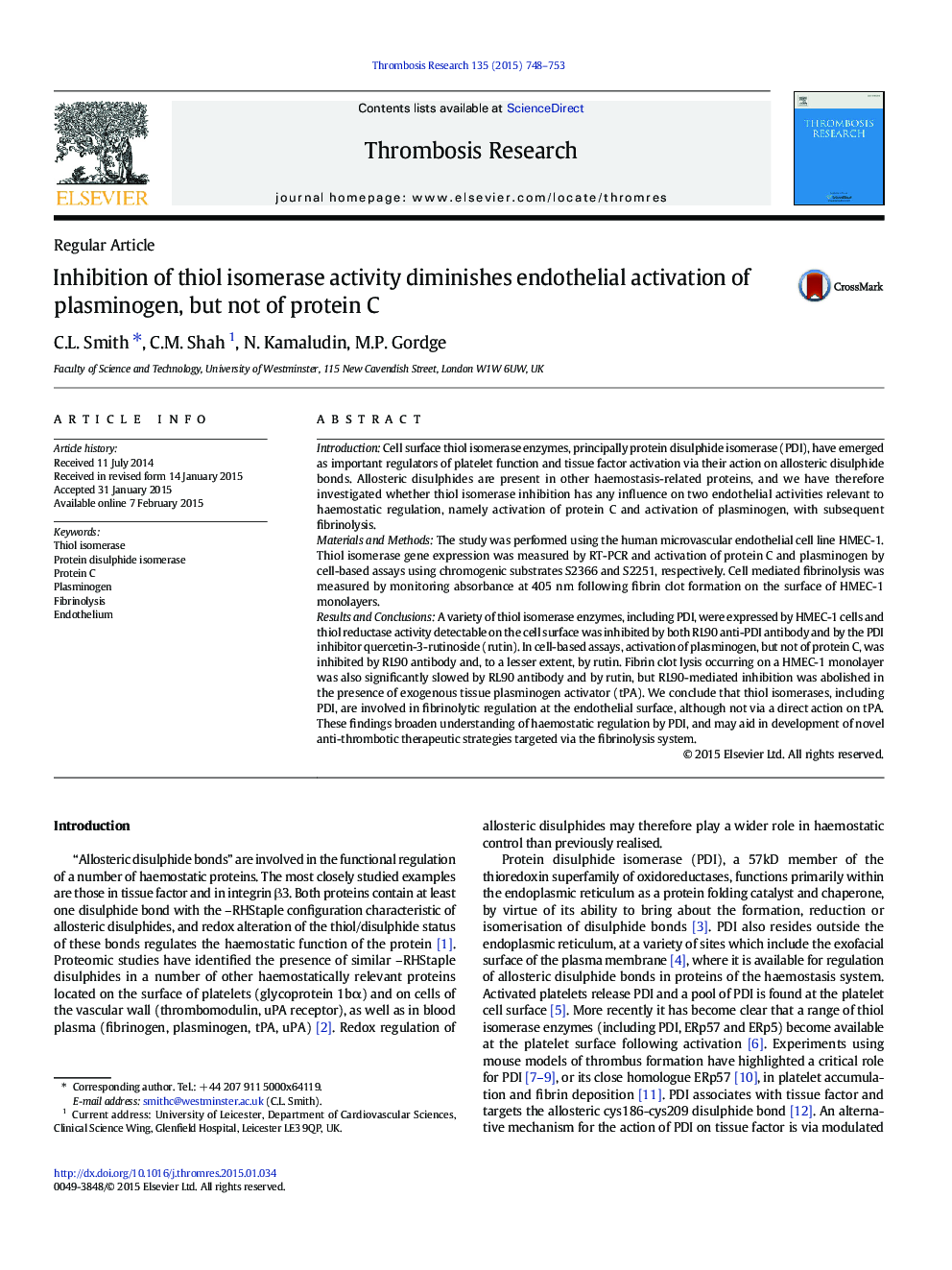| Article ID | Journal | Published Year | Pages | File Type |
|---|---|---|---|---|
| 6000805 | Thrombosis Research | 2015 | 6 Pages |
â¢A range of thiol isomerase enzymes were expressed by HMEC-1 endothelial cells.â¢Inhibition of thiol isomerases reduced plasminogen activation on HMEC-1 cells.â¢Exogenous bovine protein disulphide isomerase increased plasminogen activation in HMEC-1 cells.â¢Inhibition of thiol isomerases also reduced fibrin clot lysis, but not via direct effects on tPA.â¢HMEC-1 mediated protein C activation was unaffected by thiol isomerase inhibition.
IntroductionCell surface thiol isomerase enzymes, principally protein disulphide isomerase (PDI), have emerged as important regulators of platelet function and tissue factor activation via their action on allosteric disulphide bonds. Allosteric disulphides are present in other haemostasis-related proteins, and we have therefore investigated whether thiol isomerase inhibition has any influence on two endothelial activities relevant to haemostatic regulation, namely activation of protein C and activation of plasminogen, with subsequent fibrinolysis.Materials and MethodsThe study was performed using the human microvascular endothelial cell line HMEC-1. Thiol isomerase gene expression was measured by RT-PCR and activation of protein C and plasminogen by cell-based assays using chromogenic substrates S2366 and S2251, respectively. Cell mediated fibrinolysis was measured by monitoring absorbance at 405Â nm following fibrin clot formation on the surface of HMEC-1 monolayers.Results and ConclusionsA variety of thiol isomerase enzymes, including PDI, were expressed by HMEC-1 cells and thiol reductase activity detectable on the cell surface was inhibited by both RL90 anti-PDI antibody and by the PDI inhibitor quercetin-3-rutinoside (rutin). In cell-based assays, activation of plasminogen, but not of protein C, was inhibited by RL90 antibody and, to a lesser extent, by rutin. Fibrin clot lysis occurring on a HMEC-1 monolayer was also significantly slowed by RL90 antibody and by rutin, but RL90-mediated inhibition was abolished in the presence of exogenous tissue plasminogen activator (tPA). We conclude that thiol isomerases, including PDI, are involved in fibrinolytic regulation at the endothelial surface, although not via a direct action on tPA. These findings broaden understanding of haemostatic regulation by PDI, and may aid in development of novel anti-thrombotic therapeutic strategies targeted via the fibrinolysis system.
